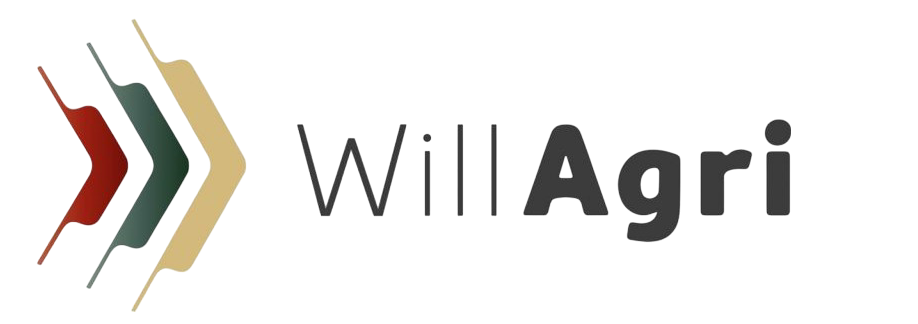The authors of the article “Measuring Women’s Empowerment in Agriculture: Innovations and Evidence” have reviewed empowerment practices, the innovations they represent, and the progress they provide to women involved in agricultural production. The authors are researchers from international institutions such as the International Center for Tropical Agriculture (CIAT) and the International Food Policy Research Institute (IFPRI). These efforts hold particular significance as women’s empowerment is one of the goals set by the Sustainable Development Goals (SDGs), particularly SDG 5, which focuses on gender equality and women’s empowerment. Defining the concept and measuring empowerment indicators will allow the evaluation of progress and its social impacts. The observations made during this research have identified the most effective practices in the implementation of agricultural development programs and measured their effects on improving living conditions: production, income, nutrition, etc. The study concludes with a series of policy recommendations related to empowerment.
The issue of gender in agriculture is relatively recent; previously, women were seen as complementary labor capable of contributing to agricultural production while also managing family logistics (health, nutrition, etc.). They have transitioned from being “means” to becoming the focus of development programs. Gender equality is not possible without a phase of empowerment.
Naila Kabeer defines empowerment as the acquisition of agency in strategic choices. Others, like Jo Rowlands, include the concept of domination, involving power over others as well as self-power through self-esteem, awareness of rights, and self-critique.
The revision of food systems provides an opportunity to promote the impact of women’s empowerment on the resilience of these systems. In all economic and social sectors, gender equality and empowerment are effective levers for improving living conditions.
In the agricultural sector, the challenge remains unique because:
• Both genders in rural areas have less access to development tools than the rest of the population: digitization, loans, training, etc.;
• Despite their dependence, women are crucial to the organization of rural societies.
The FAO published a report on women’s place in the agri-food system, noting a decrease in their share in the agricultural sector (-8 points between 2005 and 2019), while their participation in processing and marketing activities increased (+8 points for the same period).
Promoting empowerment and creating measurement indicators should encourage project leaders to integrate this goal into development programs and empower farmers in the exercise of power within their operations.
Through indicators, local initiatives can demonstrate the benefits of empowerment and strengthen women’s credibility in taking on new responsibilities.
As early as 1995, the Beijing Declaration discussed the negative repercussions of patriarchal concepts in societal organization. Such concepts perpetuate inequalities and hinder women’s empowerment. New policies introduce the concept of empowerment but lack a conducive framework for its realization.
According to Naila Kabeer, three elements define empowerment:
• Resources; • Willingness or commitment to implement one’s capacity; • Achievements.
The “resources” and “achievements” criteria are typically measured and broken down by gender (poverty, income, health, nutrition, education).
Measuring engagement is more challenging; some studies measure women’s participation in collective and family decisions, and these measures should also consider the elements of power described by Jo Rowlands, such as negotiation, manipulation, subversion, and resistance.
The way women participate in agriculture, production, value chains, and food systems is mainly evaluated within households. Quantifying their empowerment occurs on two levels: either through undertaken actions or through the impact on the operation in terms of power and organization.
It is possible to measure the actions actually taken or the ecosystem resources that enable women to empower themselves. Resources include land ownership, education level, or employment.
Taking action is the result of self-determination (Bandura 1997; Ryan and Deci 2000) or the outcome of household negotiations (Laszlo et al., 2020; Doss 2013).

Creation of Evaluation Indicators
The Women’s Empowerment in Agriculture Index (WEAI), created in 2012, measures empowerment through interviews in five areas: production, resources, income, leadership, and time. During interviews, both women’s empowerment degree and parity in empowerment between couples are evaluated.
This index is now used by around sixty countries and over 240 organizations, and it establishes two indices: • Five Domains Index (5D): Women’s empowerment • Gender Parity Index (GPI): Comparison of male and female empowerment
Since its launch, additional indicators have been introduced to shed light on the empowerment ecosystem.
Some enrich interviews, such as indicators related to health decisions or workplace sexual harassment, while others cover specific sectors:
• Women’s Empowerment in Fisheries Index (WEFI); • Women’s Empowerment in Livestock Index (WELI); • Women’s Empowerment in Nutrition Index (WENI).
These more recent indices only concern the measurement of women’s empowerment and do not measure gender parity in empowerment. For some researchers, the absence of parity measurement hinders analysis, as men’s desire for empowerment can act as an obstacle to women’s empowerment.
Overall, gender issues are introduced into all existing sociological studies, particularly in household surveys where “data is insufficient, or even nonexistent,” according to the World Bank.
A simplified measure of empowerment is being integrated into the 50X2030 program, a multi-partner initiative aimed at accelerating agricultural data collection in 50 countries by 2030.

Experiences of Empowerment
The Gender, Agriculture, and Assets Program, Phase 2 (GAAP2), encompassing around ten agricultural development projects, incorporates an analysis of empowerment and gender equality.
To assess empowerment, evaluators consider three domains and twelve indicators:
• “Power to” evaluated based on six criteria: decisions, assets, credit access, income control, workload, information access; • “Internal power”: decision autonomy, self-efficacy, attitudes towards possible domestic violence, respect; • “Power with”: group membership and influence.
The inspected projects aimed at women’s empowerment and improvement in terms of nutrition or income. Action strategies included three aspects:
• Providing goods and services: seeds, financing, animals; • Strengthening organization; • Developing knowledge and skills, introducing gender considerations.
Positive effects are observed; for example, the benefit of microcredit within the program generates more respect within the household, as well as toward lenders in the marketplace.
Group membership is also a lever for acquiring knowledge or skills, whether in expertise or better access to aid and resources (inputs).
Evaluators noted that training yields better results for women’s empowerment when delivered to couples, not just to women. The involvement of the household’s man or tribal leader provides a legitimate framework for women’s empowerment.

Source : Quisumbing A. et al. (2023), Measuring Women’s Empowerment in Agriculture: Innovations and Evidence, Global Food Security, vol. 38
Intervention programs also impact the livestock sector. Women more readily receive animals than machinery or land. Livestock ownership brings many benefits favoring empowerment:
• Self-management of livestock; • Food security: animals provide for the family; • Income generation through product sales: milk, cheese, etc.; • Financial security: in times of crisis, women can sell animals.
Gender inequality effects still exist. For instance, women must leave the management of large or valuable animals to men, cannot access care for their animals, lose control of income once the activity becomes lucrative, and are traditionally replaced by men in negotiations with buyers, mostly men.
These various observations show that in farms where women are empowered and enabled, productivity is better, families are better nourished, and children are better educated.
Empowering female farmers or breeders brings overall well-being to rural populations.
The study’s authors believe that the analysis of empowerment and its impacts should also include the environmental aspect, including respect for biodiversity or the management of natural resources. Women have a different approach to resources, perform additional tasks beyond agricultural work (meal preparation, childcare, etc.), giving them a comprehensive view of essential needs and resources.
Women’s overall satisfaction could also be integrated into studies, encompassing an analysis of their aspirations and linking them to children’s academic success, for instance.
Finally, empowerment was evaluated at a certain point in time; conducting research throughout women’s lives would be prudent to better understand the long-term effects of empowerment.
Conclusion
Empowerment is considered an individual goal, but the researchers’ work demonstrates that it positively impacts the community when supported.
The observation compiles data from various geographical areas (Africa, Asia, etc.), and international organizations hope to generate quantitative databases. However, the qualitative aspect of the study is fundamental as empowerment occurs in local contexts governed by traditions.
Empowerment presents a dual challenge: creating an enabling ecosystem and encouraging women to assert themselves within the organization. In some cases, charitable organizations provide the means for action, while in others, women themselves decide to take autonomy by disrupting rural structures.
Public policies cannot address empowerment solely through the lens of gender and the implementation of actions for women. They must also support men in this new distribution of power, ensuring they endorse the transition.
Issues related to age, race, and ethnic identity have not been addressed in this study, yet they also intersect with women’s empowerment capacity.
Source : ScienceDirect




